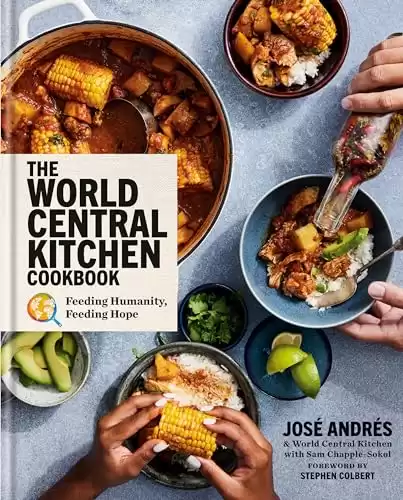
World Hunger Day is today!
World Hunger Day is an annual event that raises awareness about the millions of people suffering from hunger around the world. The Hunger Project, an organization dedicated to ending world hunger, created this day to highlight the importance of hunger relief efforts. It is a sobering reminder that while many of us have an abundance of food, others are struggling to find their next meal.
World Hunger Day serves as a call to action for governments, policymakers, and individuals to take steps towards ending hunger and poverty. It’s a time to remember that ending hunger requires a collective effort and a commitment to creating a world where everyone has access to nutritious food. Let’s work together to eliminate world hunger, one step at a time. Celebrate World Hunger today!
HISTORY OF WORLD HUNGER DAY
World Hunger Day was established in 2011 by the Hunger Project, an organization dedicated to ending hunger and poverty. The day is meant to raise awareness about global hunger issues and inspire action to combat hunger around the world.
100 THINGS TO KNOW ABOUT WORLD HUNGER AND HOW YOU CAN HELP
- Worldwide Impact: Over 820 million people suffer from hunger globally.
- Regional Disparities: Hunger is prevalent in both developing and developed countries.
- Children Affected: Approximately 149 million children under the age of 5 are stunted due to malnutrition.
- Affects Health: Malnutrition weakens the immune system, making individuals more susceptible to diseases.
- Economic Burden: Hunger contributes to lost productivity and economic instability.
- Food Insecurity: Many individuals lack consistent access to nutritious food.
- Gender Disparities: Women and girls are disproportionately affected by hunger due to socio-cultural factors.
- Rural vs. Urban: Hunger is more prevalent in rural areas, but urban hunger is also a significant issue.
- Climate Change Impact: Climate-related disasters can exacerbate food insecurity.
- Conflict Zones: Hunger is often exacerbated in areas affected by conflict and war.
- Agricultural Challenges: Small-scale farmers face numerous challenges in producing enough food.
- Food Waste: A significant amount of food is wasted globally, exacerbating hunger.
- Policy Solutions: Effective policies are essential to address the root causes of hunger.
- Sustainable Agriculture: Promoting sustainable farming practices can help alleviate hunger.
- Empowering Communities: Empowering local communities to produce their own food can reduce dependence.
- Education: Improving education about nutrition and farming techniques can help combat hunger.
- Government Support: Governments play a crucial role in implementing hunger alleviation programs.
- International Aid: International cooperation and aid are vital in addressing hunger on a global scale.
- Infrastructure Development: Improving infrastructure can facilitate access to food in remote areas.
- Healthcare Access: Access to healthcare services is essential for addressing malnutrition-related issues.
- Social Safety Nets: Establishing social safety nets can provide support to vulnerable populations.
- Research and Innovation: Investing in research and innovation can lead to more effective hunger solutions.
- Community Gardens: Community gardening initiatives can increase access to fresh produce in urban areas.
- Micronutrient Supplementation: Providing essential vitamins and minerals can address nutritional deficiencies.
- Water Access: Ensuring access to clean water is crucial for food production and consumption.
- Livelihood Diversification: Diversifying livelihoods can reduce reliance on agriculture alone for income.
- Food Distribution Systems: Efficient distribution systems are necessary to reach those in need.
- Cultural Sensitivity: Hunger alleviation efforts should consider cultural preferences and practices.
- Public-Private Partnerships: Collaboration between public and private sectors can enhance hunger initiatives.
- Empowering Women: Women’s empowerment can lead to improved food security within households.
- Social Entrepreneurship: Innovative business models can address hunger while promoting sustainability.
- School Feeding Programs: Providing meals in schools can improve children’s nutrition and attendance.
- Climate Resilience: Building resilience to climate change can safeguard against food shortages.
- Market Access: Improving access to markets can help small-scale farmers sell their produce.
- Emergency Response: Swift and effective emergency response is critical during food crises.
- Advocacy and Awareness: Raising awareness about hunger can mobilize support for action.
- Nutrition Education: Educating communities about balanced diets can improve overall health.
- Addressing Poverty: Poverty alleviation is intertwined with efforts to combat hunger.
- Child Nutrition: Ensuring proper nutrition in early childhood is crucial for long-term health.
- Economic Development: Sustainable economic development can reduce vulnerability to hunger.
- Local Food Production: Supporting local food production can boost food security.
- Food Sovereignty: Promoting food sovereignty empowers communities to control their food systems.
- Technological Solutions: Technology can play a significant role in improving food production and distribution.
- Crisis Prevention: Addressing underlying causes can prevent future food crises.
- Food Assistance Programs: Providing food assistance can alleviate immediate hunger needs.
- Urban Farming: Urban farming initiatives can utilize limited space to produce food locally.
- Land Rights: Securing land rights for small-scale farmers can improve food security.
- Healthcare Infrastructure: Strengthening healthcare infrastructure can address health-related causes of hunger.
- Social Justice: Hunger alleviation efforts should prioritize equity and social justice.
- Donate to Food Banks: Supporting local food banks provides immediate relief to those in need.
- Volunteer at Soup Kitchens: Offering your time at soup kitchens helps serve meals to the hungry.
- Organize Food Drives: Collecting non-perishable food items for donation can make a significant impact.
- Support Farmer’s Markets: Buying from local farmers supports sustainable agriculture and food access.
- Advocate for Policy Change: Lobbying for policies that address the root causes of hunger can bring systemic change.
- Educate Others: Spreading awareness about hunger issues can mobilize support and action.
- Reduce Food Waste: Minimizing food waste at home and in communities conserves resources for those in need.
- Start Community Gardens: Establishing community gardens provides fresh produce for local residents.
- Sponsor a Child: Supporting a child through organizations like World Food Programme ensures they receive regular meals.
- Promote Sustainable Eating: Encouraging plant-based diets and sustainable food choices reduces strain on resources.
- Participate in Hunger Walks: Joining hunger walks raises funds and awareness for hunger relief efforts.
- Support Food Rescue Programs: Backing initiatives that rescue surplus food and distribute it to the hungry prevents waste.
- Engage in Food Policy Advocacy: Getting involved in advocacy campaigns pushes for policy changes that address hunger.
- Teach Cooking Skills: Offering cooking classes empowers individuals to make nutritious meals with limited resources.
- Host Fundraising Events: Organizing fundraisers generates resources for hunger relief organizations.
- Support School Meal Programs: Donating to school meal programs ensures children receive nutritious meals.
- Raise Funds for NGOs: Fundraising for NGOs working on hunger alleviation provides vital support.
- Participate in Meal Packaging Events: Packaging meals for distribution to the hungry is a hands-on way to help.
- Engage in Food Redistribution: Supporting initiatives that redistribute surplus food to those in need reduces waste.
- Invest in Agriculture: Investing in small-scale agriculture projects in developing countries boosts food security.
- Participate in Community Meals: Joining or organizing community meals fosters solidarity and support.
- Advocate for Living Wages: Supporting fair wages helps alleviate poverty, a root cause of hunger.
- Support Indigenous Food Sovereignty: Backing indigenous-led initiatives preserves traditional food systems and knowledge.
- Participate in Food Recovery Networks: Contributing to food recovery networks ensures surplus food reaches the hungry.
- Engage in International Aid Work: Volunteering or working with international aid organizations provides direct assistance to affected regions.
- Raise Awareness on Social Media: Sharing information and resources about hunger issues on social media platforms educates others.
- Support Women’s Empowerment: Backing initiatives that empower women economically and socially improves household food security.
- Host Potluck Dinners: Hosting potluck dinners fosters community connection while reducing food waste.
- Advocate for Land Rights: Supporting land rights for small-scale farmers ensures equitable access to resources.
- Participate in Gleaning Programs: Joining gleaning programs helps harvest surplus produce for redistribution.
- Support Sustainable Fishing Practices: Promoting sustainable fishing practices preserves marine resources for future generations.
- Engage in Political Activism: Advocating for hunger-related issues with policymakers can drive meaningful change.
- Promote Food Sovereignty: Supporting local food sovereignty movements empowers communities to control their food systems.
- Provide Microloans: Offering microloans to small-scale farmers and entrepreneurs supports sustainable livelihoods.
- Participate in Hunger Challenges: Taking part in hunger challenges raises awareness and funds for hunger relief.
- Support Community Food Cooperatives: Backing community-owned food cooperatives promotes food access and equity.
- Volunteer at Food Pantries: Assisting at food pantries helps distribute essential items to those in need.
- Engage in Urban Farming: Participating in urban farming initiatives utilizes urban spaces for food production.
- Advocate for Climate Action: Addressing climate change mitigates its impact on food security and agriculture.
- Support Refugee Assistance Programs: Backing programs that assist refugees ensures access to food and resources.
- Participate in Nutrition Education Programs: Volunteering for nutrition education programs teaches essential skills for healthy eating.
- Support Indigenous Land Rights: Advocating for indigenous land rights preserves traditional food sources and cultures.
- Participate in Community Supported Agriculture (CSA): Joining CSAs supports local farmers and provides fresh produce.
- Support School Gardens: Backing school garden programs teaches children about food production and nutrition.
- Engage in Food Policy Research: Conducting research on food policy informs evidence-based advocacy efforts.
- Promote Food Justice: Advocating for equitable access to nutritious food promotes food justice.
- Participate in Disaster Relief Efforts: Volunteering for disaster relief efforts provides urgent assistance during crises.
- Support Agricultural Education: Backing programs that teach sustainable farming practices improves food security.
- Participate in Hunger Symposia: Attending hunger symposia facilitates learning and networking for effective action.
- Support Community Development: Backing community development projects addresses underlying causes of hunger.
- Long-Term Commitment: Sustainable solutions require long-term commitment and investment.
HOW TO CELEBRATE WORLD HUNGER DAY
World Hunger Day is a global observance dedicated to raising awareness about the critical issue of hunger and food insecurity. On this day, communities, organizations, and individuals come together to celebrate progress made in the fight against hunger, while also highlighting the ongoing challenges and the need for collective action. Through events, fundraisers, and advocacy efforts, World Hunger Day aims to inspire positive change, foster solidarity, and mobilize support for hunger relief initiatives worldwide.
- Read and learn about The Hunger Project.
- Use the Charity Navigator to evaluate/donate to world hunger efforts.
- Organize a food drive.
- Find a food pantry in the US.
- If you love the article image, purchase it on these fun products on Zazzle!
- Download the 38 Hertz Celebration Book with 365 days of celebrations!
FEATURED ITEM ON WORLD HUNGER DAY
Amazing organization, founder, cookbook, and stories!
Note: If the above links do not direct you to the appropriate referral on the first try, return to the article and try again.
Do you have any ideas about how to celebrate World Hunger Day? Please share them!













